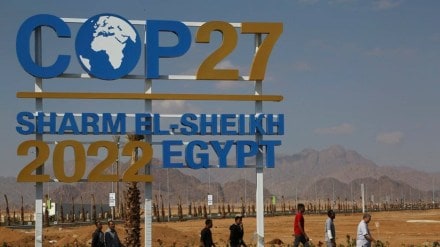By Arjun Dutt
In all the buzz, negotiations, photo-ops, and urgency at Egypt’s Sharm El-Sheikh in the first week of COP27, there was a chorus that stuck out—protesting youth shouting, “Pay up, pay up.” That’s been the most contentious issue of the conference—climate finance, which is well short of the $100 billion promised per year by developed countries to developing ones for climate action, which is itself short of the money actually needed.
Released a week before the commencement of COP27, the UNFCCC Standing Committee on Finance’s Biennial Assessment and Overview of Climate Finance Flows found that annual global capital flows for climate action stood at $803 billion, whereas per the IPCC, investments of up to five times that could be necessary to limit warming to 1.5°C. Much of this will be needed in developing countries, where domestic financial systems lack the capacity to fund investments at scale for climate action. That’s why the urgent call to ‘pay up’.
Let’s talk money now
Not only have the latest reported climate finance flows fallen short of the $100 billion target by 17%, but also questions on the accuracy, methodological robustness, and verifiability of the reported figures suggest that the extent of underperformance is much larger. Further, only one-third of reported flows, amounting to $28 billion, were directed towards adaptation. With the impact of extreme climate clearly showing, such as the recent floods in Pakistan and the droughts in East Africa, developing countries want developed ones to follow through on their promise of doubling adaptation finance from 2019 levels by 2025.
According to the UNEP’s latest Adaptation Gap Report, adaptation could cost up to $340 billion per year by 2030 and $565 billion per year by 2050. If adaptation remains poorly funded, loss and damage financing, on the agenda at COP27 finally, would need that much more attention. Further, the share of concessional capital, which can underwrite investment risks, continues to remain low, with grants accounting for only 26% of reported public climate finance flows. With the bulk of public climate finance channelled in the form of loans instead of blended finance, this capital was able to mobilise a paltry 19% of itself in private capital flows. The majority of the public climate finance was delivered through multilateral sources, particularly multilateral development banks (MDBs).
Also read: ICICI Pru Sukh Samruddhi: Multipurpose savings plan offers guaranteed maturity benefits, annual bonus
Time for four shifts
COP27 must correct current flaws in the implementation of climate finance support to developing countries. With a few days left to negotiate, four shifts are necessary to align climate finance flows with global climate objectives.
First, capital is needed at a much greater scale than the levels that have been promised and delivered. Negotiations are underway on a new collective quantified goal to replace the $100 billion per year figure for the period beyond 2025. Considering the extent of support developing countries need, the scale of finance must shift by order of magnitude to trillions from billions.
Second, delivered finance must strike an optimal balance between public capital provided and private capital mobilised, mitigation and adaptation, and grant and non-grant funding. The impact of public capital must be maximised by directing it to fund blended finance instruments that underwrite risks to crowd in many multiples in private sector capital flows. To underwrite risk as well as fund adaptation activities, many of which are not commercially viable, the share of grants in public climate finance would need to rise considerably. For this, the inherent constraints of the major vehicles of finance delivery (MDBs) would also need to be addressed. The need for MDBs to maintain top-notch credit ratings to keep borrowing costs low makes it challenging for them to offer grants at scale. A review of capital adequacy frameworks of MDBs to identify ways for these institutions to extend more grant capital is urgently needed. Failing this, public climate finance must be routed through alternative institutions that have a greater capacity to extend grant capital.
Third, climate finance must be directed towards addressing investment risks that either deter climate investments in developing countries or increase the cost of finance. According to a CEEW analysis, five broad areas are of particular relevance—de-risking utility-scale renewable energy investments by focussing on non-project specific risks (currency risk, political risk, off-taker risk), reducing the cost of finance for distributed renewable energy applications for small and medium enterprises, the orderly repurposing of fossil fuel assets, providing risk capital for R&D in emerging clean technologies such as green hydrogen, and insuring against climate risks.
Also read: Leave Travel Concession: Salaried employees can’t avoid TDS if the itinerary includes a foreign trip
Lastly, regulation in developing countries should facilitate the delivery of climate finance. Regulation governing sectors associated with climate mitigation and adaptation should endeavour to deliver a conducive business environment for investors. In addition, financial regulators should ensure that taxonomies and disclosure frameworks, which aid investors in identifying credible investment opportunities, are interoperable with global standards to facilitate the flow of international capital.
Sharm El-Sheikh has just a couple of days left to fulfill its ambition of becoming an “Implementation COP” and break the habit of broken promises on climate finance.
The writer is senior programme lead, Centre for Energy Finance, CEEW
Twitter: @ArjunDutt_00
